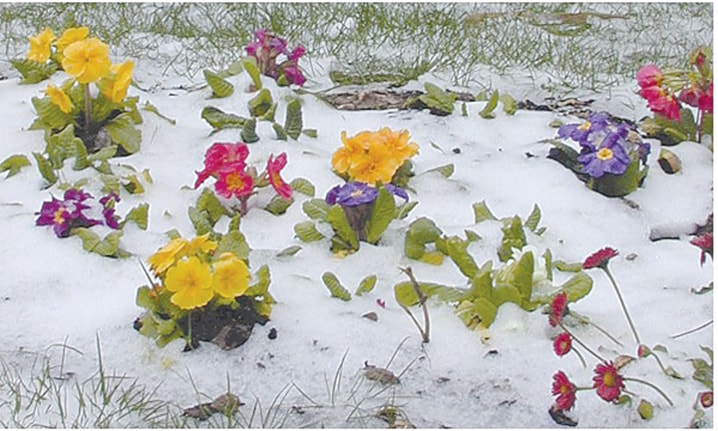Climate, temperatures and amount of precipitation, have a huge impact on the garden regardless of the season. Central Alberta has enjoyed a winter with little precipitation and warmer than average temperatures.
Looking at it from the human perspective it has been a great winter with good roads and very little time spent removing snow. For the plants, life isn’t quite as rosy.
A six-inch (15-cm) layer of snow will insulate plants from the changing air temperatures. On days when the temperature dips low plants without insulation are at risk. Tender plants that were not covered in mulch or snow and were exposed to the elements could suffer dieback or winterkill.
Warm days, ones where the snow is melting and the skating rinks are thawing, confuse the plants systems. While the days are not long enough for plants to signal spring the warm temperatures bring plants closer to breaking dormancy.
Buds start to swell on trees and shrubs that are in sunny locations. If an Arctic cold front moves in the moisture in the trees and buds can freeze, expand and crack the surrounding wood. If this happens branches and buds will die.
Evergreen trees are at risk during warm winters. The amount of moisture that is stored in the roots of evergreens must last them until the ground thaws making more moisture accessible. Evergreen plants transpire, lose moisture through their needles, more on warm sunny days than when the temperatures are cold. Problems will occur when moisture stores are depleted.
Lack of internal moisture causes needles start to become dry to the touch. The needles will then turn a different shade of green before turning brown later in the season.
Once the needles die they can not be replaced.
Damage can be minimized by watering evergreens on warm days. Slowly soaking the root zone under the plants allows some moisture to penetrate the ground and be absorbed by the roots.
Covering evergreens with a cloth, shading them from the intense heat of the sun or the reflection off the snow is beneficial. The type of cloth is not important but it must shade the plant and allow the plant to breath. Do not use plastic.
Foundation plantings on the south or west sides of buildings are the first to lose their snow. The ground becomes dry and warm, encouraging spring plants to appear. If the area is close to a sidewalk, shovel excess snow on these areas all winter.
An alternative in years that lack snow is to water. On warm days take time to slowly water beds that have exposed soil. If the water slowly penetrates the soil staying in the structure, it will freeze when the temperatures drop below freezing. Once frozen the soil is less likely to warm and thaw on warm days.
Warm soil and longer days encourage spring bulbs to emerge form the ground. These plants will grow when the climate is favourable and remain static when the weather is cold.
Snow will not kill the spring bulbs but it can topple them over. Flower buds will freeze if the temperatures drop too low.
The buds will also die if the bulbs become too dry. Water spring bulbs when needed.
Plants have definite needs. Take a little time to ensure the basics are met at this time of year and the garden will come through the winter looking better than ever.
Linda Tomlinson is a horticulturalist that lives near Rocky Mountain House. She can be reached at www.igardencanada.com or your_garden@hotmail.com
